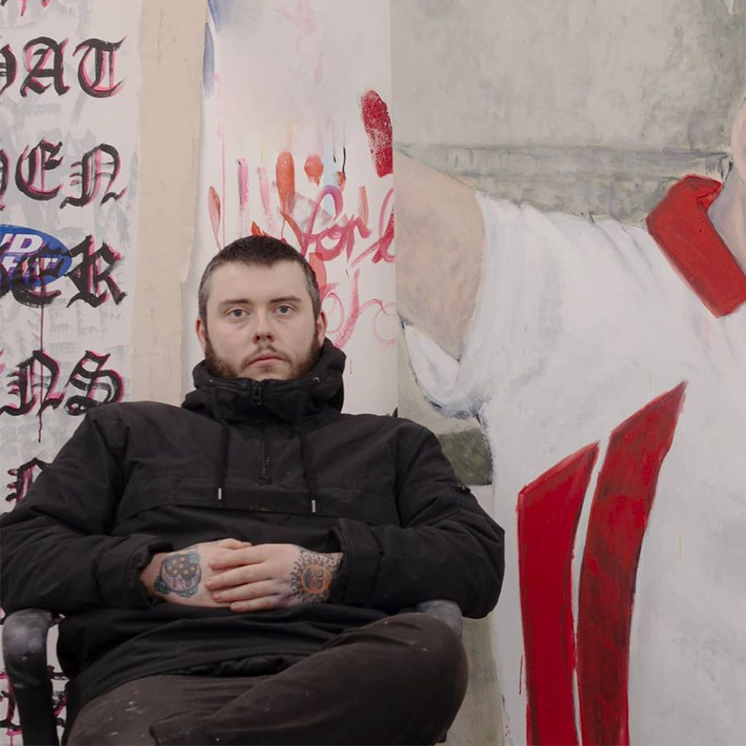Tell us a little bit about yourself and what you do.
I’m a Scottish artist, writer and more recently curator based in Leeds, UK. In 2021 I founded a gallery called SCREW alongside a group of other like-minded artists.
How did the narrative of American Pop Culture become an inspiration for you?
I moved from Glasgow to Aberdeen when I was quite young, the two places are only about three hours apart but are culturally quite different. Glasgow is characterised by a friendly, gregarious kind of attitude and Aberdeen is more dour. My parents never really emphasised maintaining a connection to or even awareness of anything Scottish, so having moved to a new build suburb full of other families who did the exact same, I kind of just gravitated towards American stuff. It was around the time of a huge boom in skateboarding, or teen-culture in general and I had neighbours who were wearing giant Blind hoodies and listening to Korn, friend’s older siblings who were skating and listening to rap and then the more preppy sort of crowd. It felt to me like that late 90s sense of teen angst was really captured by American pop culture much more than British – mtv2 had a big effect on me.
Thinking now, maybe the exoticism of American stuff represented something like a sense of hope or ambition to leave what I identified from a young age as a cultural dead zone. This feeling and attachment only grew as I got older and more into hardcore and skating.
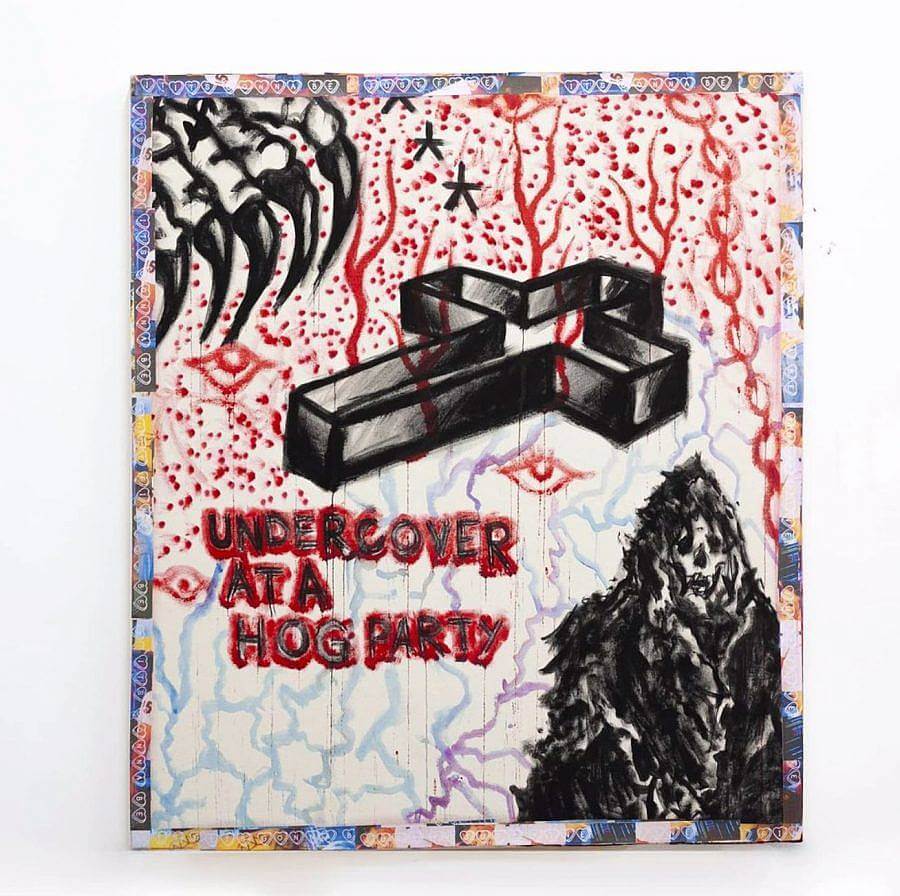
Can you tell us about your recent exhibition “HE WILL ALWAYS BE MY SON” and the conception of its title?
That was a two person show with Jack Kennedy at a gallery in Leeds called Village (they’re also maybe the best photobook shop in the country).
The show was all about responsibility for vulnerable people, the idea that there is no such thing as born evil – someone’s circumstances lead them to who they are and what they do. It’s easy to write off someone like Dahmer as evil because he killed and ate people, but the reality is that he was mentally ill and failed by his family and society. To say someone like that is an evil person who did evil things and there was nothing anyone could have done is lazy, it’s passing the buck.
The title came from Luca Magnotta’s mother, she shouted it whilst being led away from papparazi. That’s a great representation of what the show was all about.
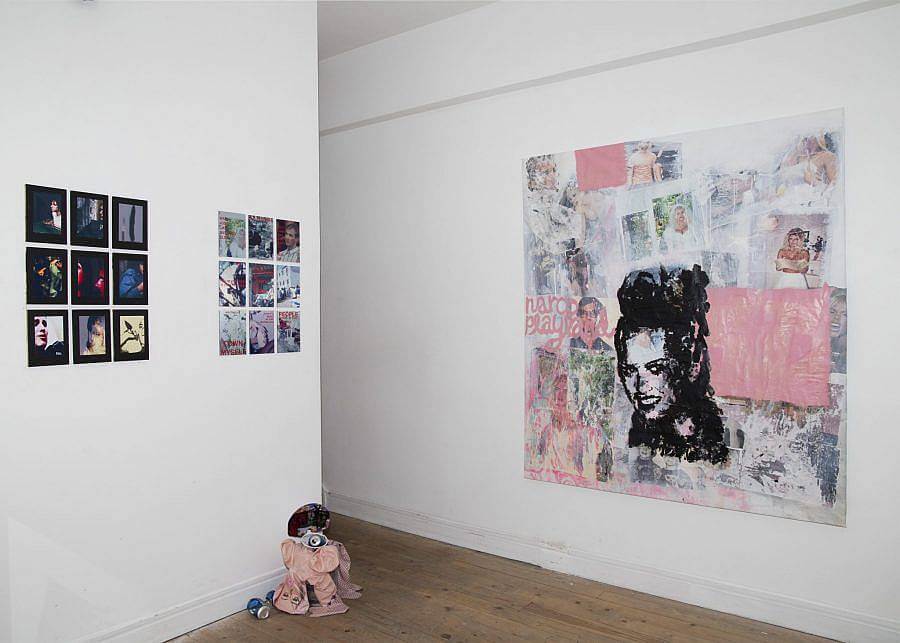
Your work appears to approach loaded and controversial photographs in a very investigative way. Do you feel that you need to disassociate your opinions on the imagery for the works to operate in the way you intend it to?
I think that controversy has really changed. The way that something becomes controversial is quite different from the time when a lot of the more recognisable imagery I use is taken from. I remember Eminem calling himself the King of Controversy because of how heavily protested the content of his records were. Now controversy is different, often linked to a more serious accusation of wrongdoing. Controversy, like the manufactured one we saw around WAP is a transparent fraud. Neeks like Ben Shapiro will say anything to centre themselves within a controversy to drive ad traffic. While in the past this sort of content would have sold magazines or promoted a record (like in the case of Eminem) I think that it’s, once again, a lot more cynical now. Focused on driving traffic in real time, regardless of the situation.
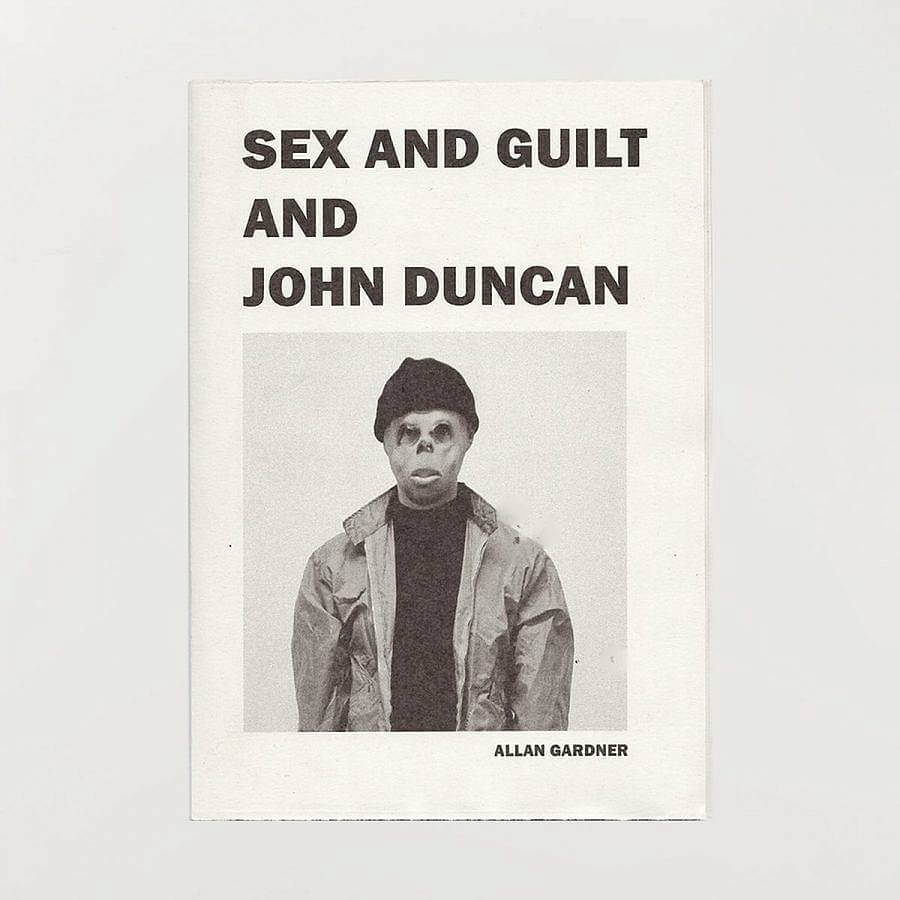
What was the genesis of Future of Nothing?
Future of Nothing is the name of my publisher, I just put out books for myself and for friends – it’s really not that much of a professional enterprise. I wanted an umbrella to house my own zines under and ended up picking up a few additional titles along the way.
Can you talk a bit about your twelve month zine project?
The project has been extended to 18 months, opening SCREW has made it a lot harder to manage my time in a way that allows those zines to come together as quickly.
The idea of the project is to separate arts and culture criticism from the news cycle, to not have to pin essays or interviews to an event or exhibition and to instead emphasise a more organic, self-directed form of research. In 2020, a lot of magazines has their budgets cut and writing work became harder to come by. This was my solution, writing about things that were interesting to me at the time and selling them in print only.
The print-only aspect is important because it also challenges the idea or shareability, clickbait sort of stuff. There’s no incentive to sensationalise these pieces of writing because the only way that anyone can share them is to physically give them to someone else, or to talk about it and include their own interpretation.
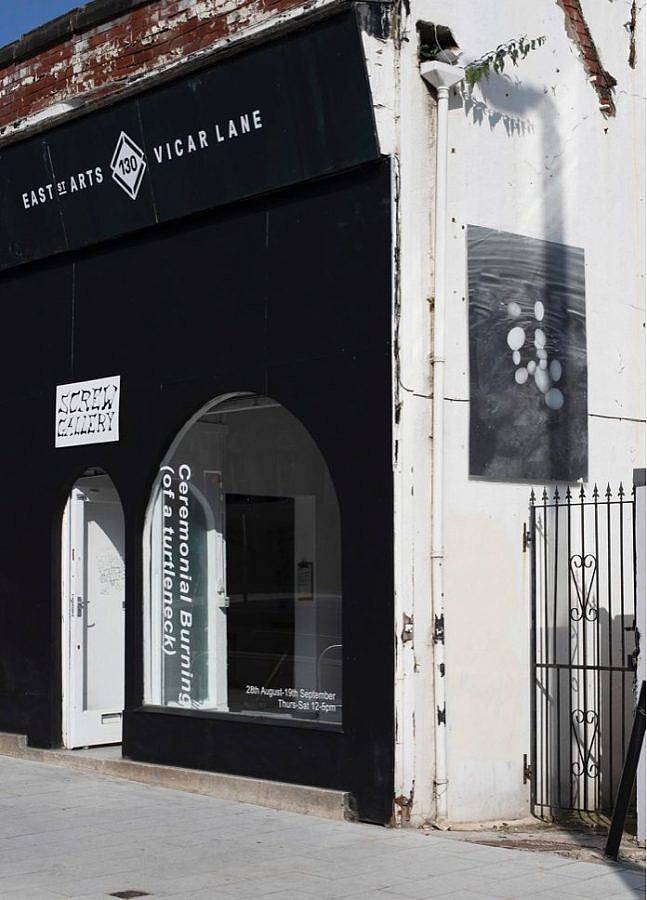
What made you want to open Screw Gallery and can you talk about any upcoming exhibitions?
I studied my BA in Leeds, about 2 hours north of London by train, and wanted to come back here following my MA. The city is affordable and has a lot of very positive grassroots culture but I always felt that contemporary art wasn’t really being represented, considering the vast number of art students in the city. There are other project spaces but we’re the only street-level gallery with a full programme of shows, at least the only one bringing over international contemporary artists.
I don’t want to give too much away but we’re currently showing Bora Akinciturk’s GROUP EGO DEATH YOGA AND MEDITATION and after that we have a group show of young artists (including some Chicago heads) which will open in February.
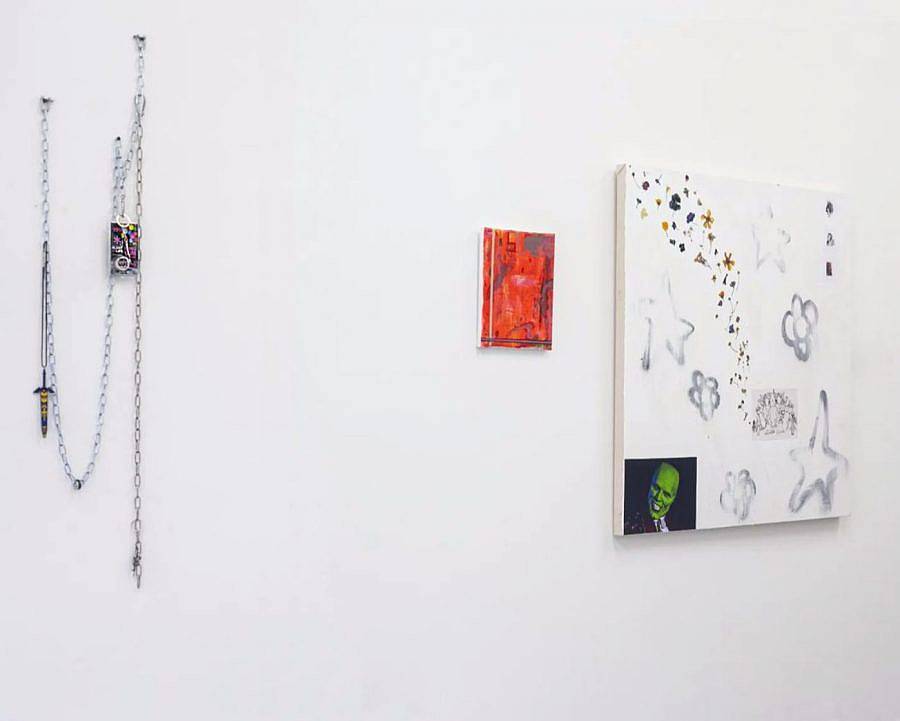
Who has been influencing your work lately?
Philip Guston, Larry Clark and Susan Sontag are always buzzing around in my head. They’re kind of my holy trinity of inspiration recently, but I guess have been forever.
Some of my recent work has been linked directly to the early 2000s, so I’ve had fun trying to get to forums or photo hosting sites from that era and pull those sorts of found images into new work. Gossip blogs have always been a mainstay, as well as evangelical stuff I find on YouTube.
At this point, I’m really more influenced by the artists around me than I am by anyone else. I work with Fern O’Carolan, Jack Kennedy, Michael Sangster, Harley Roberts, Sam Hutchinson and Edd Carr almost every day and I think that has a significant influence on all of our work.

Do you consider your writings on capitalism, fame, and guilt as an extension of your studio practice or more of a separate endeavor that guides your understanding of these themes?
They’re absolutely part of my studio practice. At one point I wouldn’t have said so, but I can’t underestimate the importance of writing and researching this stuff outside of my physical work.
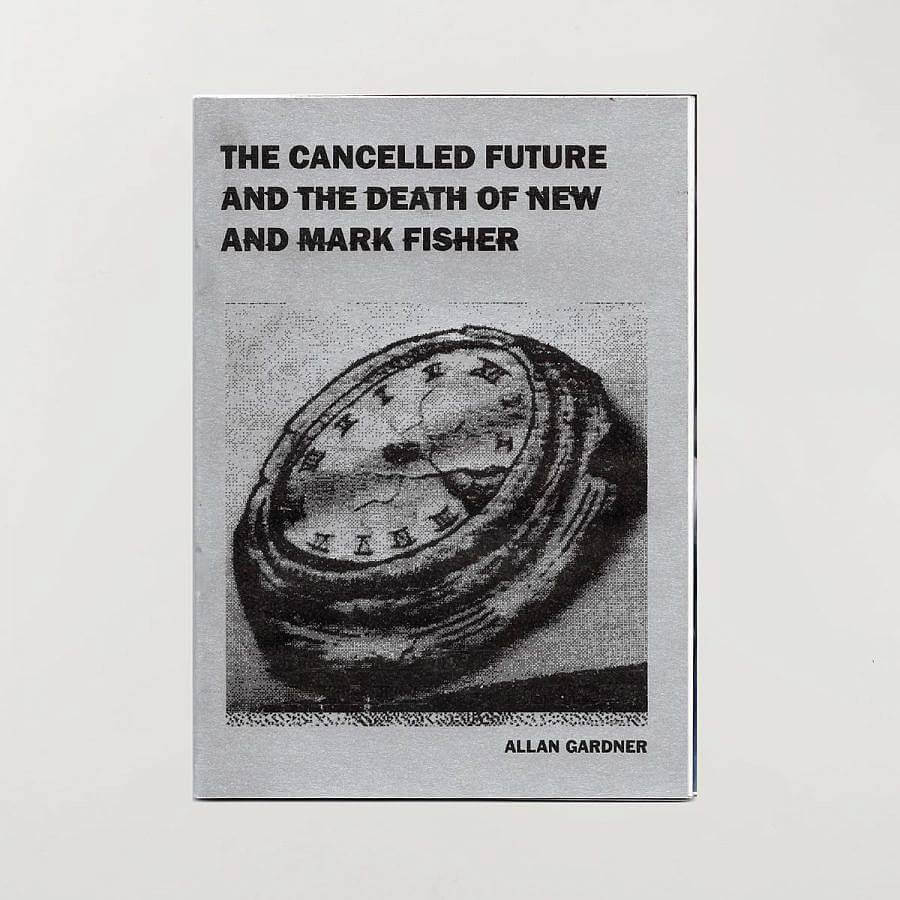
Much of your work pertains to morality, do you do this as a way to address the fixation on morality within the current state of pop culture?
It definitely started that way. I was really interested in moral posturing, the sense of absolutism that people seemed to feel necessary to inject into their art. It’s not a political concern, I’d identify politically as an anarchist and an antifascist, my moral concerns within politics tend to stop at the safety and well-being of others – quality of life issues.
When morality was first starting to creep into my work, it was to do with moral posturing – that idea that you might say one thing but mean another, attempting to emphasise your moral fortitude whilst chastising a competitor or a straw man.
I wrote my thesis on cultural relativism, the idea that something’s morality shifts based on where you are. I feel like the transience of morality is ignored a lot of the time, as well as the dissonance between the moral fortitude we expect from others Vs what leeway we allow ourselves. I’ve had artists rant at me about oppression while drinking cokes and eating McDonald’s, seeing no irony. Maybe doing coke is an example that people prefer, but normally its both. I always come back to respect for non-human animals and the importance of veganism in discussion about artworks as they relate to morality, the consideration of animals as a resource is something that I see as a basic wrong, so I was shocked to meet so many artists concerned with moral issues who still eat animals. The reality is that the art world isn’t concerned with that moral issue, so it isn’t present in work, it’s not fashionable.
Whether you agree or disagree with the moral issue of treating animals as a resource, it’s still a good example of where a moral issue is ignored based on the desires of a given social culture – in this case, the contemporary art world.
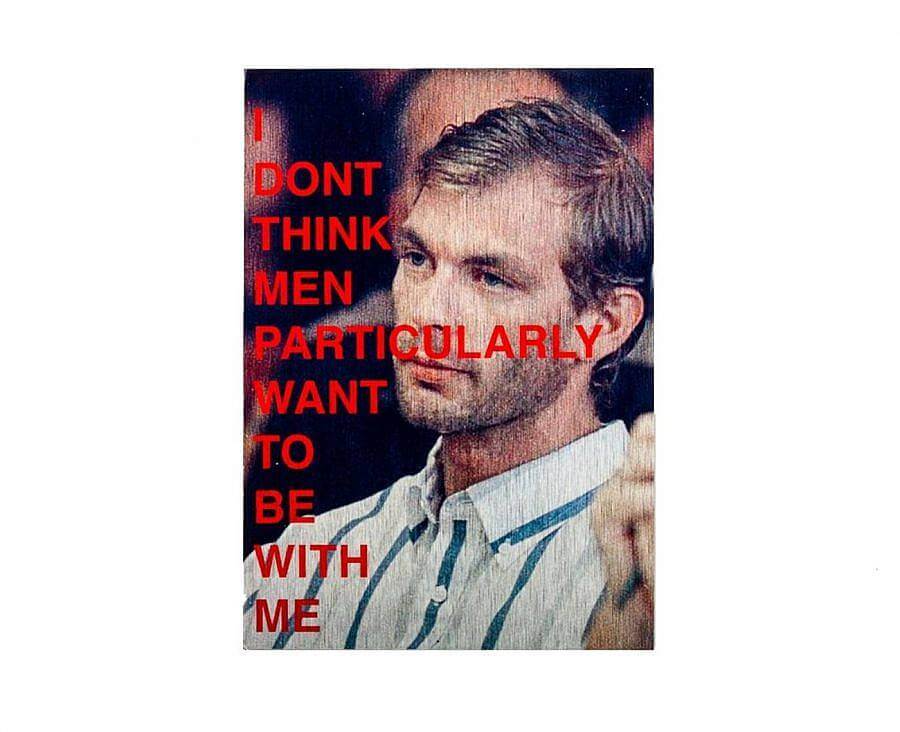
Any upcoming projects?
SCREW shows will be kicking off every month for the rest of the year, so that keeps me busy. At the moment I have four shows planned for this year, two duo and two solo. I don’t want to say anymore than that because stuff is always in flux, but I think it should all be a lot of fun.
Interview conducted and edited by Sam Dybeck.
